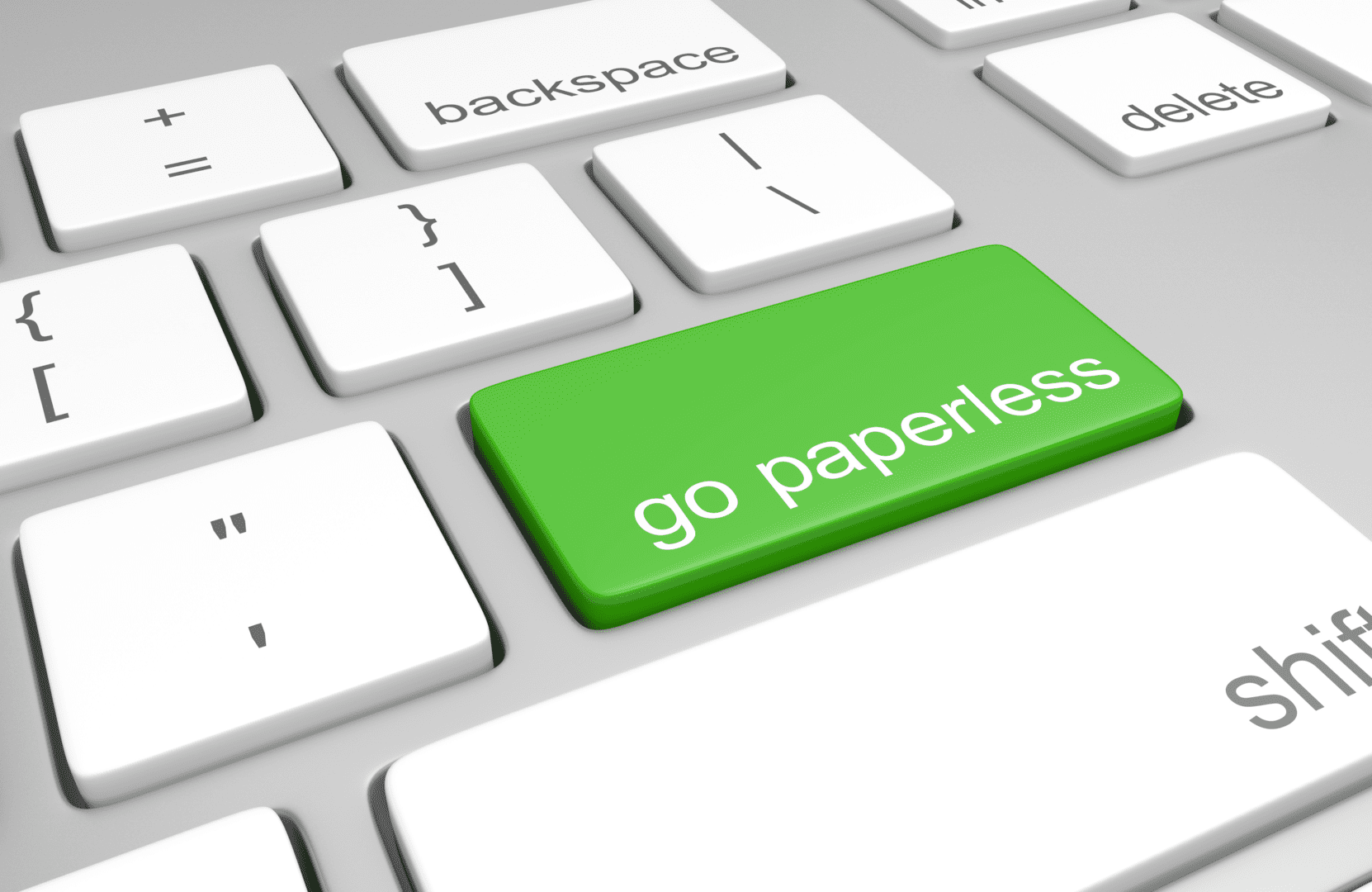By David Singletary
Remember the prime promise to the business community as the computer age took hold? Paper will become obsolete. Every memo, letter, contract, and spreadsheet will be stored on a relatively small stack of floppy disks. (Yeah, it was a few years ago when that promise was made.)
So what happened?
Nowadays, you can store just about everything “in the cloud,” a virtual patch of real estate located somewhere in cyberspace.
Leading cloud storage options are more secure than your own file cabinets or warehouse storage space, and all of your data is available to whoever has permitted access at the few clicks of your laptop, tablet or even your phone.
Chances are, all that’s stopped you from going paperless thus far is intimidation. While it may seem like the route to digitization will take valuable time you could be spending recruiting talent, closing sales or simply staying afloat, you’ll find that the investment of time now will save you and your team significant time and cost on an ongoing basis. Here are four steps to getting there.
Get Organized
It’s no different when committing to going paperless. Start by coming up with efficient online folders and naming conventions for all users. Set up permissions for each folder and keep the process as simple as possible to encourage universal acceptance.
You’re likely to find that you can make improvements even in your current digital space. For instance, while helping one client get organized, I found thousands of unfiled messages in one inbox. I don’t think that’s all that uncommon to businesses.
Explore Your Electronic Options
You can’t go paperless if you don’t fully understand the digital options out there — and there are a lot of them. In a future blog post, I’ll provide an example of an actual use case and the results.
The cloud has never been a more secure and affordable electronic document option. Leading brand-name online storage options include Dropbox, Google Drive, SharePoint, OneDrive and many, many others. Costs can start from a few dollars a month for the typical business.
Readily available and even free collaborative tools include digital notebooks like Microsoft OneNote and EverNote. All involved team members can work from and contribute to the same digital space easily — without passing out a single sheet of paper to anyone.
Execute!
Now you’re ready to implement your new system. Start scanning as many of your existing documents that don’t have an electronic life as you can. Keep in mind, even many tax and legal documents are acceptable in electronic format. Going forward, ask for electronic copies of anything that would be otherwise transmitted by mail or fax.
Lead by example. Schedule self-audits and paper purges on an ongoing basis to make sure you and your people don’t fall back on bad habits. Which gets us to…
Promote Buy-In
You can’t do this alone. The system only works if others in your company buy into the changeover. A cloud presence might be a no-brainer to some millennial team members, while others who’ve long worked in a paper environment might balk or absently backtrack.
Stay patient, positive and encouraging, but firm to your commitment. Offer comprehensive training and motivate others to find ways to extend the paperless environment. You might also keep an eye on your printer usage and copier paper budget, both of which should go down considerably.
Take these four relatively easy steps and your company will soon live the promise of a paperless office. At some point you’ll actually be able to cart those bulky file cabinets out and free up some valuable workplace real estate.
David Singletary is a software project manager at Wiss & Company LLP with over 20 years’ experience in project management. You can contact him at (973)994-9400 or at [email protected].

 Previous
Previous






